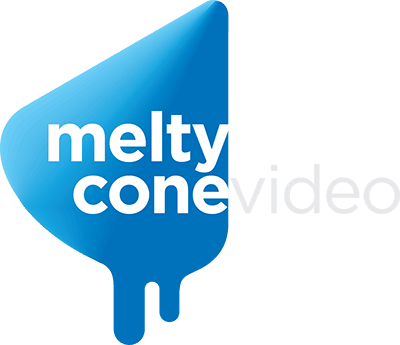Documentary filmmaking is a classic cinematic genre. The term has come to mean both a distinctive filmmaking technique as well as a noble cinematographic search for truth. Professionals in video production and film who want to work in documentary filmmaking need to know the genre's history and the many documentary forms.
Viewers may be less aware that a documentary, like any other kind of media, is just one portrayal of a concept, subject, person, organization, or event.
What Exactly Are Documentary Styles?
Documentary films are considered more factual and objective-oriented than their fictional counterparts. Most documentary makers hold a specific goal in mind while making them and stick to a particular style.
Bill Nichols described six basic styles of documentaries in his book- Introduction to Documentary. It is worth mentioning that certain documentaries tend to use elements from more than one of these styles.
Six Different Styles of Documentaries
Poetic mode
The poetic mode began its footsteps in the late 1910s and continued till the early 1920s. It started as a refute to the growth of narrative storytelling. This method experiments using montage editing, which aims to establish meaning through the matching of disparate images. The resulting meanings reflect more abstract patterns and themes.
Music is crucial to poetic documentaries, assisting in the construction of meaning, picture interpretation, also overall rhythmic flow.
Without the use of continuity editing, the feeling of the very precise area and place created by continuity is lost.
Analyses temporal rhythms, as well as spatial juxtapositions in relationships and patterns, can be helpful in modern-day video marketing.
Expository mode
An expository documentary makes a compelling rhetorical argument because everything in the documentary serves to support that point. By describing the pictures exhibited, the film aims to exert control on the film's interpretation. It is more necessary to explain the documentary's point than it is to enable the viewer to think as well as decide for themselves.
Emerged out of frustration with the fiction film's distracting through the entertainment aspects.
At times thoughts appeared to be romantic or didactic. The voice of god commentaries and poetic perspectives tried to disclose knowledge about the historical world and to understand it anew.
Addressing the viewer directly through the use of titles or voices can be a unique approach to video content made for the advertisement market.
Participatory mode
The participatory mode involves the filmmaker in the process of production. Throughout the video, the director is fully involved, participating in events and conducting interviews while presenting themself on camera.
This mode aims to engage with folks more directly while avoiding the use of traditional exposition interview techniques.
It enables filmmakers to account and explain past occurrences through the use of witnesses plus experts who are also visible to the audience.
To avoid the dangers of reenactment and the monolithic claims of speech of god discourse, archival video is included in these commentaries.
Observational mode
The observational mode was developed in response to both the expository and technological revolutions. Cameras became smaller and quieter, lenses improved in terms of speed and sensitivity to low light, and audio recording became wireless. These advances in equipment enabled smaller crews to obtain access to even more intimate and private spaces and spontaneous situations. Finally, observational documentary filmmakers aimed to let life develop naturally in front of their cameras.
Emerged due to the availability of lightweight, portable synchronous recording equipment and discontent with the explanatory documentary's moralizing nature.
It let filmmakers capture unobtrusively what people did while they were not directly addressed by the camera.
It emphasizes the filmmaker's absence of intervention which can be a major point to note related to promoting your content and not the maker.
Reflexive mode
Films in the reflective style draw attention to themselves. Rather than just employing standard documentary methods to tell their stories, several films twist the standards in ways that call into question our preconceived notions of what a documentary is.
It is the most self-aware form - its reflexivity draws attention to the ways in which other modes profess to establish "truth" through documentary practice.
It employs a number of devices from other modes but positions them on edge, drawing the viewer's attention to the device and also the effect.
It shatters the filmmaker's illusory absence.
Performative mode
The performative approach of filmmaking uses the filmmaker's personal experience as a springboard for comprehending a bigger political or social issue. As a result, this mode prioritizes individual experience over objective facts.
As is the case with Reflexive Documentary, it highlights issues of knowledge.
Endorses an understanding of knowledge that places a premium on human experience (in the tradition of literature poetry).
Attempts to explain how comprehending such personal knowledge might aid in our comprehension of more general social processes.
Video Marketing Strategies For Your Promotional Campaign
Strategies for video marketing are not new. You should not create a digital marketing video without planning. Budget, schedules, production procedures, conversion metrics, video advertising or video ads and more will all be guided by your video marketing strategy. Getting things down in writing and finalized should be your first step.
The Procedure is as follows:
Begin with your video objectives.
Determine your intended audience.
Determine the storyline you wish to convey.
Maintain a balance of creative requirements.
Commit to your schedule.
Keep a realistic budget.
Summing Up
You can seek help from a video agency as they are professionals working just on video production, video advertising or video ads. They also work on video marketing which can effectively promote your business. People prefer them to other forms of content. By using these six styles, filmmakers can define a loose framework of connection within which individuals can operate, make a documentary film, and provide certain expectations for the viewer.


